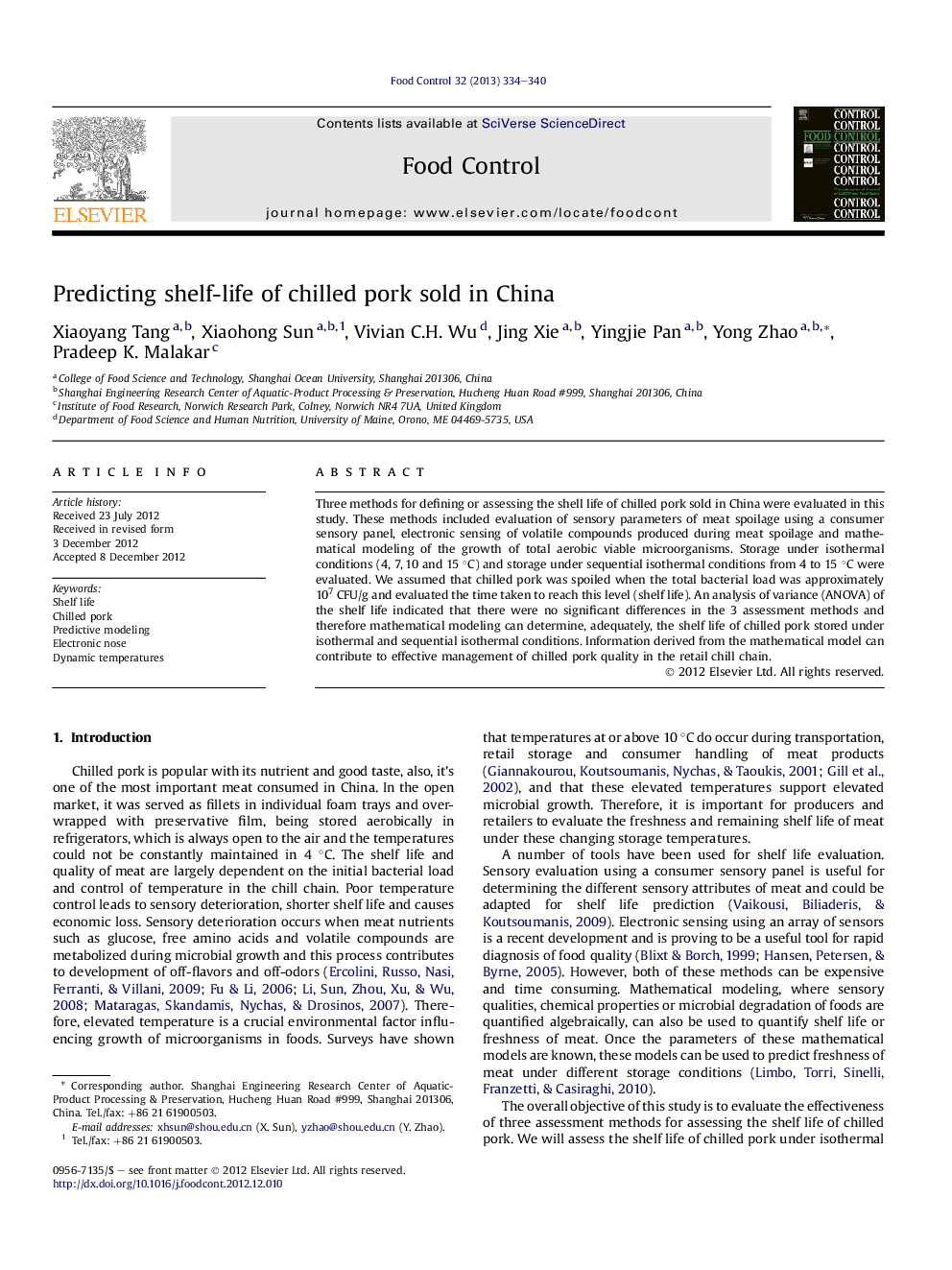| Article ID | Journal | Published Year | Pages | File Type |
|---|---|---|---|---|
| 6393150 | Food Control | 2013 | 7 Pages |
Three methods for defining or assessing the shell life of chilled pork sold in China were evaluated in this study. These methods included evaluation of sensory parameters of meat spoilage using a consumer sensory panel, electronic sensing of volatile compounds produced during meat spoilage and mathematical modeling of the growth of total aerobic viable microorganisms. Storage under isothermal conditions (4, 7, 10 and 15 °C) and storage under sequential isothermal conditions from 4 to 15 °C were evaluated. We assumed that chilled pork was spoiled when the total bacterial load was approximately 107 CFU/g and evaluated the time taken to reach this level (shelf life). An analysis of variance (ANOVA) of the shelf life indicated that there were no significant differences in the 3 assessment methods and therefore mathematical modeling can determine, adequately, the shelf life of chilled pork stored under isothermal and sequential isothermal conditions. Information derived from the mathematical model can contribute to effective management of chilled pork quality in the retail chill chain.
⺠Growth models for predicting shelf-life of chilled pork stored at 4-15 °C ⺠Sensory approaches to predicting shelf-life. ⺠Evaluating modeling and sensory approaches to shelf life prediction.
